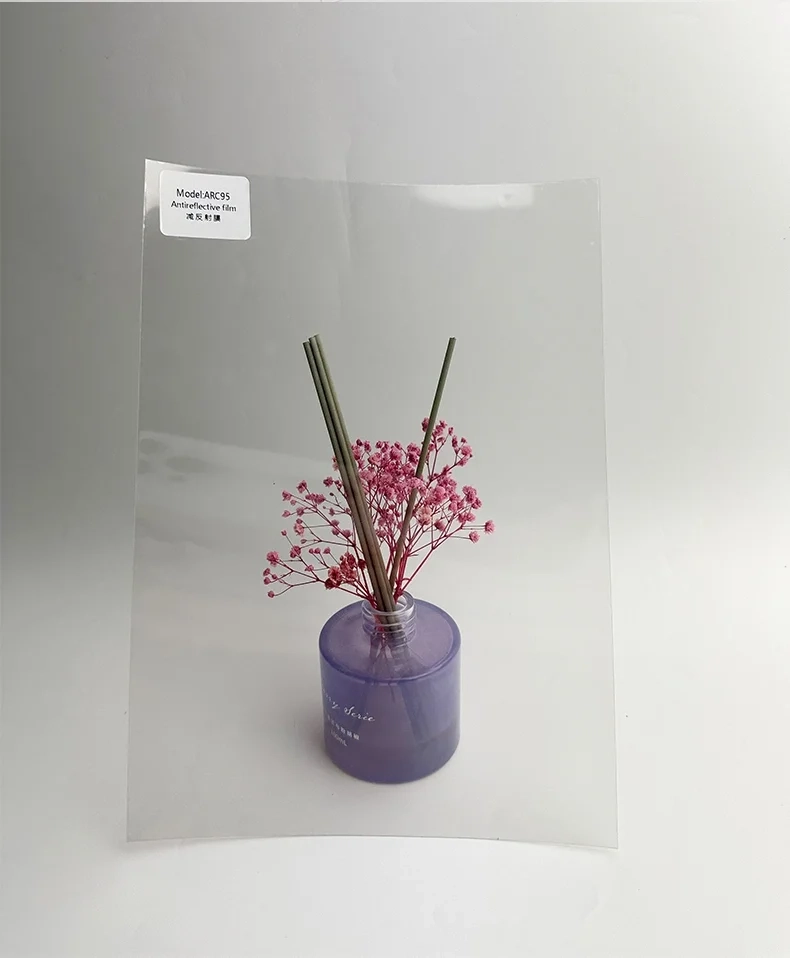- This topic is empty.
-
AuthorPosts
-
16/05/2025 at 23:42 #79336
In today's museum environments, the balance between preserving priceless artifacts and offering visitors an immersive viewing experience is both an art and a science. While lighting, case construction, and environmental controls are often emphasized, one element quietly revolutionizes visual presentation: clear anti reflection film. This advanced optical solution is transforming how museums display their collections by eliminating glare, enhancing visibility, and protecting delicate artifacts without compromising on aesthetics. This article Intlight explores the pivotal role of clear anti reflection film in museum display cases, providing a comprehensive look at its benefits in exhibition design.
What is the Clear Anti Reflection Film?

Clear anti reflection film is a high-performance optical coating applied to glass or acrylic surfaces used in display cases. Its primary function is to reduce surface reflections, allowing light to pass through the material with minimal interference. By employing multiple ultra-thin layers engineered to manipulate light wavelengths, this film reduces reflections typically seen under ambient and artificial lighting. Unlike tinted or frosted coatings, clear anti reflection film preserves the original transparency and color fidelity of glass or acrylic. It allows visitors to view artifacts, paintings, manuscripts, and three-dimensional objects without the distracting glare or mirror-like effects caused by conventional untreated glazing. The result is a seamless viewing window that enhances both the visual and curatorial quality of exhibits.
Clear Anti Reflection Film in Museum Display Cases Benefits
1. Enhanced Visibility and Clarity
Perhaps the most immediate and striking advantage of clear anti reflection film is its ability to drastically improve visibility. Museums rely on a combination of spotlights, ambient lighting, and, in some cases, natural light, which can create problematic reflections on glass surfaces. These reflections obscure artifacts, force visitors to adjust viewing angles, and reduce the emotional and educational impact of the display. By applying clear anti reflection film, surface reflections can be reduced by up to 95%, depending on the product specifications. This enhancement ensures visitors see the true form, color, and detail of each artifact as intended by the curator, regardless of their position around the display case. Whether viewing a delicate textile, an illuminated manuscript, or a gemstone-studded artifact, the film provides uninterrupted clarity. This immersive transparency enhances storytelling and reinforces the museum's role in communicating history and culture through objects.
2. Improved Light Transmission
In addition to reducing reflections, clear anti reflection film improves light transmission through the glazing. Standard glass may reflect 8% or more of incoming light, diminishing brightness and muting colors. With a high-quality anti reflection coating, light transmission can exceed 97-98%, allowing exhibits to appear more vibrant and illuminated even under conservation-conscious lighting. This improvement in brightness is especially critical for low-light exhibits, where sensitive artifacts must be displayed under reduced lux levels to prevent degradation. Clear anti reflection film enables the use of controlled lighting while still delivering excellent visibility, preserving both the object and the viewing experience.
3. Minimized Visual Distractions
In a museum environment, even subtle distractions can undermine the focus on the object. Reflections of other displays, visitors, or light fixtures create unintentional visual noise. By installing clear anti reflection film on display case glazing, these distractions are minimized or eliminated. The result is a clean, distraction-free viewing surface that creates the illusion of an “invisible barrier.” This optical clarity allows artifacts to appear as though they are unobstructed, floating within the space—an effect highly sought after in premium museum and gallery designs.
4. Preservation of Color Fidelity and Visual Integrity
Certain anti-glare solutions, such as matte or frosted glass, reduce reflections but at the cost of introducing haze, color distortion, or blurring. In contrast, clear anti reflection film preserves true color fidelity and optical sharpness. This is critical in the museum context, where color perception is integral to understanding an object's original appearance, materials, and artistic intent. For example, illuminated manuscripts, oil paintings, and dyed textiles demand accurate color representation. By using clear anti reflection film, curators can ensure that visitors perceive colors as they exist in the object, without unwanted shifts or dimming effects caused by untreated glass.
In the specialized field of museum display design, few materials offer as transformative an impact as clear anti reflection film. By enhancing visibility, reducing distracting reflections, and preserving optical fidelity, this film enables museums to present their collections with clarity, integrity, and elegance. Beyond its visual advantages, clear anti reflection film provides protective and functional benefits, including scratch resistance, ease of cleaning, and optional UV filtering—qualities that extend the life of display infrastructure while safeguarding valuable artifacts. As museums continue to evolve their exhibition practices to meet higher standards of presentation and conservation, the integration of clear anti reflection film will remain a cornerstone in achieving visually stunning, visitor-focused, and conservation-conscious displays. Whether in renowned art institutions, historical archives, or natural history museums, this invisible innovation makes all the difference—quietly, powerfully, and beautifully.
https://www.intlightfilms.com/Transparent-Anti-Reflective-Film.html
http://www.intlightfilms.com
Shanghai intlight thin film technology co., ltd. -
AuthorPosts
- You must be logged in to reply to this topic.